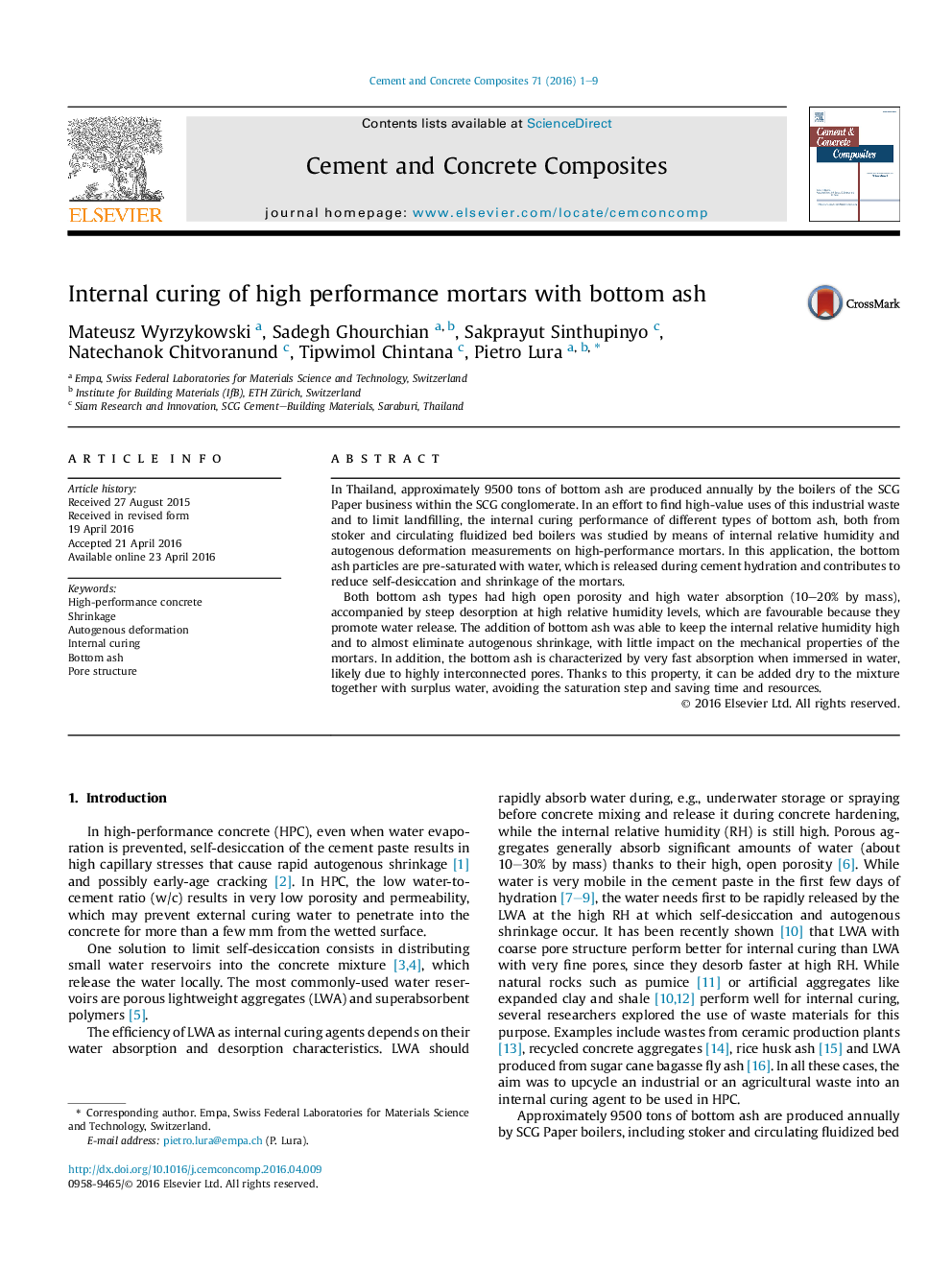| Article ID | Journal | Published Year | Pages | File Type |
|---|---|---|---|---|
| 1454305 | Cement and Concrete Composites | 2016 | 9 Pages |
In Thailand, approximately 9500 tons of bottom ash are produced annually by the boilers of the SCG Paper business within the SCG conglomerate. In an effort to find high-value uses of this industrial waste and to limit landfilling, the internal curing performance of different types of bottom ash, both from stoker and circulating fluidized bed boilers was studied by means of internal relative humidity and autogenous deformation measurements on high-performance mortars. In this application, the bottom ash particles are pre-saturated with water, which is released during cement hydration and contributes to reduce self-desiccation and shrinkage of the mortars.Both bottom ash types had high open porosity and high water absorption (10–20% by mass), accompanied by steep desorption at high relative humidity levels, which are favourable because they promote water release. The addition of bottom ash was able to keep the internal relative humidity high and to almost eliminate autogenous shrinkage, with little impact on the mechanical properties of the mortars. In addition, the bottom ash is characterized by very fast absorption when immersed in water, likely due to highly interconnected pores. Thanks to this property, it can be added dry to the mixture together with surplus water, avoiding the saturation step and saving time and resources.
